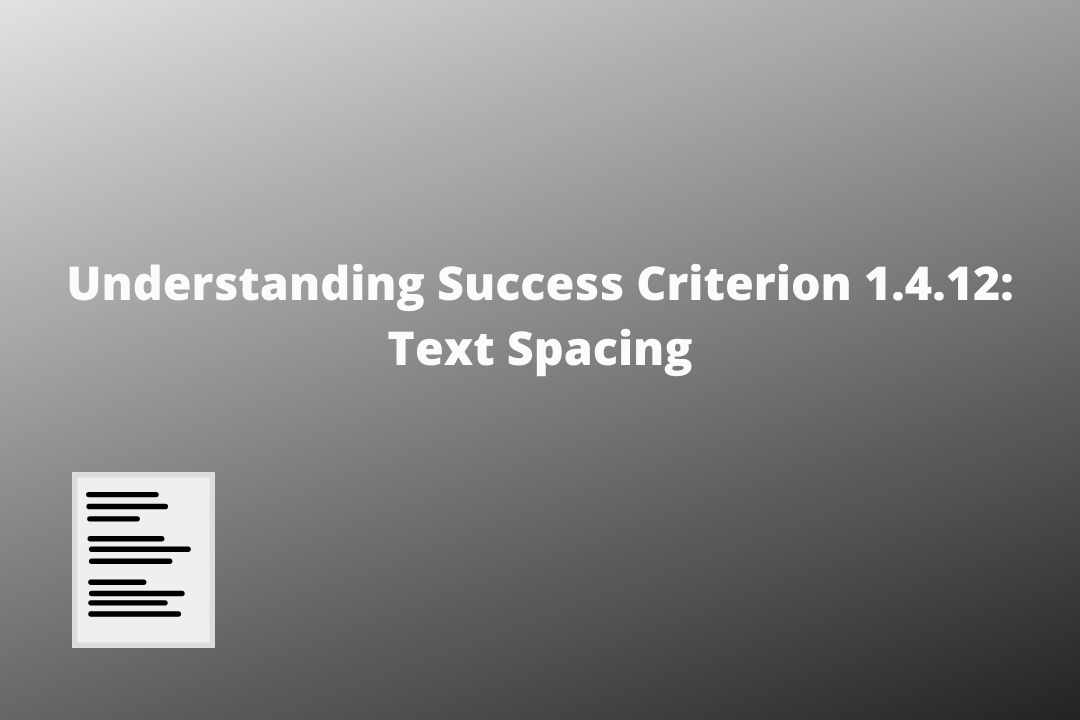Ensure that the content implemented using markup languages retains meaning when users change the text spacing.
Table of Contents
Official Requirements
Success Criterion 1.4.12 Text Spacing (Level AA): In content implemented using markup languages that support the following text style properties, no loss of content or functionality occurs by setting all of the following and by changing no other style property:
Line height (line spacing) to at least 1.5 times the font size;
Spacing following paragraphs to at least 2 times the font size;
Letter spacing (tracking) to at least 0.12 times the font size;
Word spacing to at least 0.16 times the font size.
Exception: Human languages and scripts that do not make use of one or more of these text style properties in written text can conform using only the properties that exist for that combination of language and script.
Why is it required?
People with low vision and cognitive impairments such as dyslexia may require increased space between lines, words, and letters for ease of reading. Furthermore, it will also help them to increase their reading speed.
How do we fix it?
- Provide an option for users to increase the text spacing
- Provide an option for users to increase the text spacing without wrapping
Are there any exceptions?
This success criterion has exceptions
- Human languages and scripts that don’t use text style properties are exempted from this success criterion
- Video captions and images of text are also exempted from this success criterion
Mistakes to avoid
Overlapping of content when users change the text spacing



